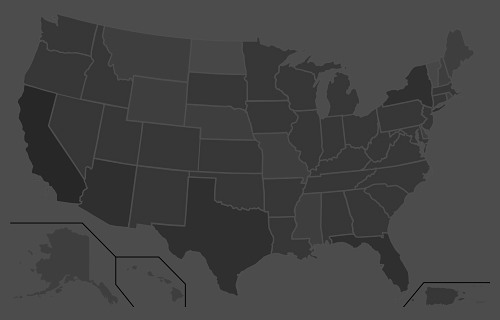“Our added winter moisture and active calling period led to a very long nesting and hatching season, starting in late April and extending into early summer, with chicks hatching as late as early July,” O’Dell said. “From a population standpoint, we are out of a deficit for the first time since 2001-2002. Quail are starting to pop up in places they haven’t been seen in a while.
“If you’ve never had the chance to experience what Arizona quail hunting built its name on, then this would be the year to get out and enjoy it.”
Meanwhile, hunters should note that the season for Mearns’ quail doesn’t begin until Dec. 4. It’s summer rainfall that plays a key role in nesting success and population numbers of this species. After a spotty and relatively weak monsoon across southern Arizona, these birds are likely to be abundant only in pockets that received sufficient precipitation this summer.
A valid Arizona hunting or combination hunt and fish license is required for all hunters 10 and older. Those hunters under 10 must either have a valid hunting or combination hunt and fish license, or be accompanied by an adult who possesses a valid hunting or combination hunt and fish license. Licenses can be purchased online or at license dealers statewide. A youth combination hunt and fish license (ages 10 to 17) is $5.
The general bag limit is 15 quail per day in the aggregate, of which no more than eight may be Mearns’ quail (when the Mearns’ season opens Dec. 4). The general possession limit is 45 quail in the aggregate after opening day, of which no more than 15 Gambel’s, scaled or California quail in the aggregate may be taken in any one day. After the opening of the Mearns’ season, the 45-quail possession limit may include 24 Mearns’ quail, of which no more than eight may be taken in any one day.
More quail-hunting information can be found on the department’s website at https://www.azgfd.com/Hunting/. Another resource for both new and experienced hunters alike is “An Introduction to Hunting Arizona’s Small Game.” Written by Randall D. Babb, the 196-page, full-color book covers where and how to hunt small game birds (like quail), squirrels, rabbits, ducks and geese. It also includes how to prepare and cook your harvest, with illustrations and recipes. The book can be ordered for $16.95 at www.azgfd.gov/publications.
Finally, hunters should check out O’Dell’s techniques for field-dressing quail at https://www.youtube.com/watch?v=3gRwZAcWzzk.
####
Publishers Notes: OUT OF STATE HUNTERS, FISHERMEN & OUTDOOR ENTHUSIASTS; Due to the Covid 19 pandemic, there could be limitations for OUT of STATE hunters, fishermen and other outdoor enthusiasts to include a 14-day quarantine requirement or negative COVID-19 testing alternative. Please check with the State's Department of Natural Resources BEFORE you travel or apply for the 2020 Fall Hunts.
Disclaimer: The views expressed on this site are that of the authors and not necessarily that of TBC Press
Wisconsin 2021 Sturgeon Spearing Season Forecast
Submitted by: TBC Press
Posted on: 02/10/21
The Backcountry Press
The country's premier daily HUNTING, FISHING & OUTDOOR news in the USA and around the globe. Read whats happening in your neck of the woods & beyond.
© 2020 TBC Press - All Rights Reserved Website Design by:
News # 14206
Spearers who have already scouted for the best areas for fish activity have reported clearer water, which was confirmed by DNR staff during a preliminary clarity check showing between 10 to 16 feet of clear water. Historical harvest data shows that an average lake-wide clarity of 12 feet or greater typically results in a shortened season with harvest caps being met more quickly. As the season approaches, the DNR will monitor water clarity since conditions can change rapidly.
Additional season forecasts and daily season harvest reports will be available throughout the season on the Winnebago system sturgeon spearing webpage.
Important Season Changes
Spearers should review the 2021 sturgeon spearing regulations for essential changes to the registration process, including new spear size and tine arrangement restrictions.
For the 2021 season, all DNR registration stations will be contactless. Spearers should place harvested sturgeon on tailgates or in an easily accessible location before entering the registration area and then remain in their vehicles throughout the registration process. The 2021 season will also be the first year that spear size and tine arrangement will be restricted. The maximum spear head width is now limited to 18 inches and tines can only be arranged in a single plane.
####
Publishers Notes: Our country is still battling COVID-19. To avoid the spread of this virus and continue to enjoy outdoor activities, ALL outdoor enthusiasts (man, woman, child) should follow the guidelines set by nps.gov. These guidelines include; social distancing, the Leave No Trace principles, including pack-in and pack-out, to keep outdoor spaces safe and healthy.
Wisconsin’s annual sturgeon spearing season begins Feb. 13 and runs for 16 days, or until any of the pre-determined harvest caps are met. This year, the Wisconsin Department of Natural Resources (DNR) predicts that harvest caps will be met prior to the 16-day season limit.
System-wide harvest caps for the 2021 Winnebago system sturgeon spearing season are 430 juvenile females, 950 adult females and 1,200 males.
The DNR encourages spearers to share their stories using this photo submission form. Photos of spearers with their catch, cutting in, shanty life, scenic views observed during the season or any other captivating spearing traditions are encouraged. Please include a brief description for use in future outreach efforts.
Clear Waters Will Likely Result In High Harvests
This year, with more snow cover and less runoff leading up to the season kickoff, the DNR anticipates better water clarity than seen in recent years. Since water clarity is crucial in spearing success, the DNR expects higher harvests from Lake Winnebago in 2021 and for harvest caps to be met before the 16-day season cutoff.












